Analysis of VIA and EbA in a River Bank Erosion Prone Area of Bangladesh Applying DPSIR Framework
Abstract
:1. Introduction
2. Materials and Methods
2.1. Study Area
2.2. Methodology of VIA and EbA
2.3. Data Collection and Analysis
2.4. Vulnerability Assessment
3. Results and Discussion
3.1. Ecosystem and Community Interrelationship
3.2. Climate and/or Non-Climate Pressures to Ecosystem and Community Services
3.3. Community Risk and Vulnerability Analysis
3.4. Future Changes and Consequences to the Riverine Ecosystem
3.5. Suggested EbA in Response to Studied Ecosystem
4. Conclusions
Acknowledgments
Author Contributions
Conflicts of Interest
References
- EEA (European Environmental Agency). Environmental Indicators: Typology and Overview; Technical Report No. 25; EEA: Copenhagen, Danmark, 1999. [Google Scholar]
- Khajuria, A.; Ravindranath, N.H. Climate change vulnerability assessment: Approaches DPSIR framework and vulnerability index. J. Earth Sci. Clim. Chang. 2012, 3. [Google Scholar] [CrossRef]
- Rahman, S.H.; Ferdous, Z.; Islam, S.T. Vulnerability and impact assessment to climate change and ecosystem based adaptation in a drought prone area of Bangladesh applying DPSIR framework. Jahangirnagar Univ. Environ. Bull. 2014, 3, 69–82. [Google Scholar]
- Gari, S.R.; Newton, A.; Icely, J.D. A review of the application and evolution of the DPSIR framework with an emphasis on coastal social-ecological systems. Ocean Coast. Manag. 2015, 103, 63–77. [Google Scholar] [CrossRef]
- UNISDR (United Nations Office for Disaster Reduction). Global Assessment Report on Disaster Risk Reduction: Risk and Poverty in Changing Climate-Invest Today for a Safer Tomorrow; United Nations: Geneva, Switzerland, 2009. [Google Scholar]
- Bizikova, L.; Bellali, J.; Habtezion, Z.; Diakhite, M.; Pinter, L.; UNEP (United Nations Environment Programme). Vulnerability and Impact Assessments for Adaptation to Climate Change (VIA Module); IEA Training Manual; UNEP: Nairobi, Kenya, 2009. [Google Scholar]
- CBD (Convention on Biological Diversity). Fourth National Report (Biodiversity National Assessment and Programme of Action-2020); Government of the People’s Republic of Bangladesh: Dhaka, Bangladesh, 2010.
- Spangenberg, J.H. Biodiversity pressure and the driving forces behind. Ecol. Econ. 2007, 61, 146–158. [Google Scholar] [CrossRef]
- Uddin, A.F.M.; Basak, J.K. Effects of Riverbank Erosion on Livelihood; Unnayan Onneshan-The Innovators: Dhaka, Bangladesh, 2012. [Google Scholar]
- BBS (Bangladesh Bureau of Statistics). Community Report Sirajganj, Population and Housing Census 2011; Government of People’s Republic Bangladesh: Dhaka, Bangladesh, 2012.
- ECCO (Bangladesh Environment and Climate Change Outlook-2012). Available online: http://www.doe-bd.org (accessed on 10 September 2013).
- Kagalou, I.; Leonardos, I.; Anastasiadou, C.; Neofytou, C. The DPSIR approach for an integrated river management framework. A preliminary application on a Mediterranean site (Kalamas River-NW Greece). Water Resour. Manag. 2012, 26, 1677–1692. [Google Scholar] [CrossRef]
- Mollah, T.H.; Baten, M.A.; Titumir, R.A.M. Accounting Climate Induced Migration in Bangladesh: An Exploratory GIS Based Study; Unnayan Onneshan: Dhaka, Bangladesh, 2011. [Google Scholar]
- BBS (Bangladesh Bureau of Statistics). Preliminary Report on Household Income and Expenditure Survey 2010; Government of People’s Republic Bangladesh: Dhaka, Bangladesh, 2011.
- IPCC (Intergovernmental Panel on Climate Change). Climate change: Impacts, Adaptation and Vulnerability, Contribution of Working Group II to the Fourth Assessment Report of the Intergovernmental Panel on Climate Change; Cambridge University Press: Cambridge, UK, 2007. [Google Scholar]
- Seal, L.; Baten, M.A. Reckoning Climate Change: Local Peoples’ Perception on the Impacts of Climate Change in South-Central and the Impacts of Climate Change in South-Central and Northern Bangladesh. Available online: http://www.unnayan.org (accessed on 23 November 2012).
- Hossain, M.A. Floating cultivation: An indigenous technology for adapting to water logging situation towards sustainable livelihood security in the low lying areas of Bangladesh. J. Biosci. Agric. Res. 2014, 1, 54–58. [Google Scholar]
- Hoorman, J.J. Using Cover Crops to Improve Soil and Water Quality; Ohio State University Extension: Lima, OH, USA, 2009. [Google Scholar]
- BARC (Bangladesh Agricultural Research Council). Land Degradation Situation in Bangladesh; Soil Division, Bangladesh Agricultural Research Council: Dhaka, Bangladesh, 1997.
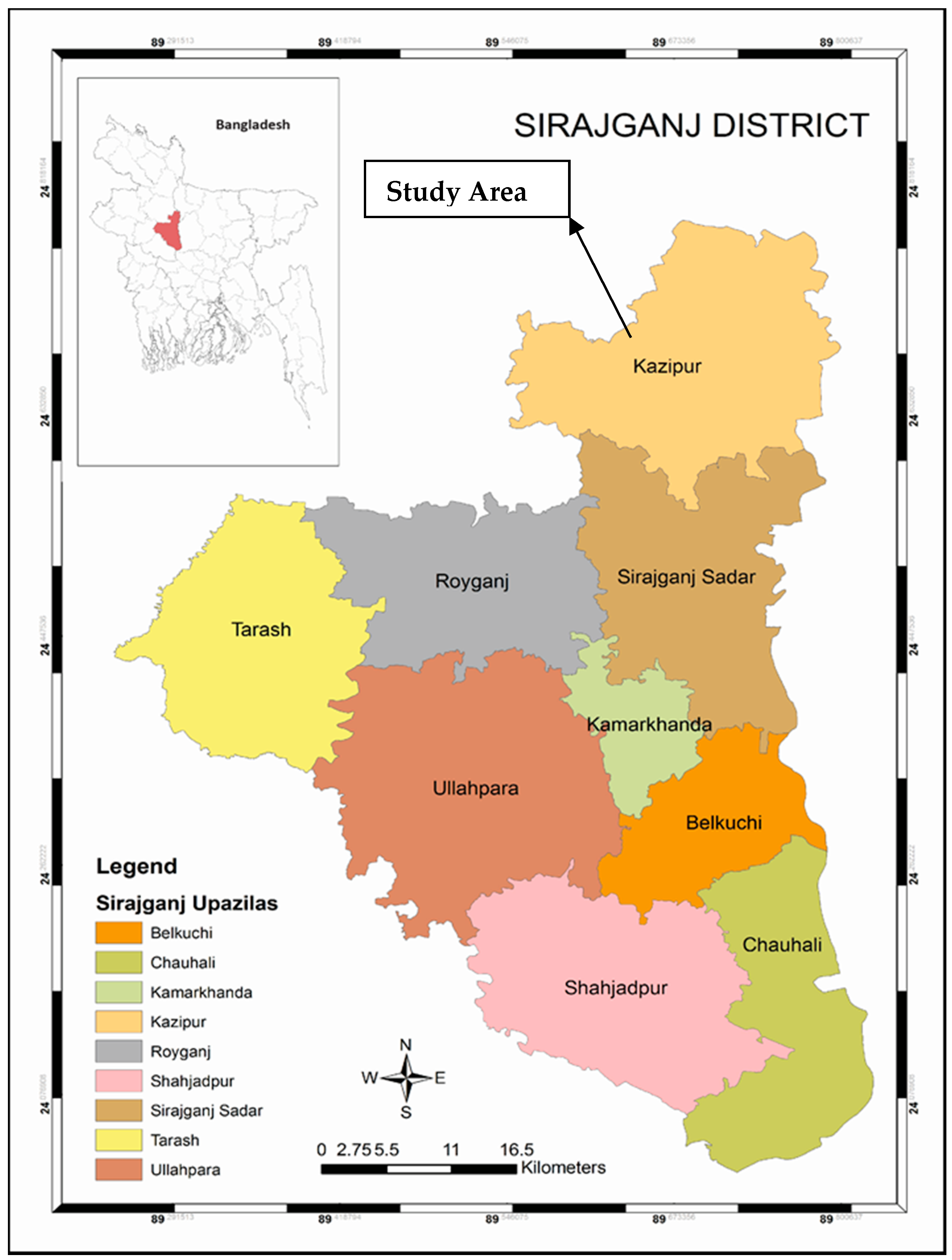

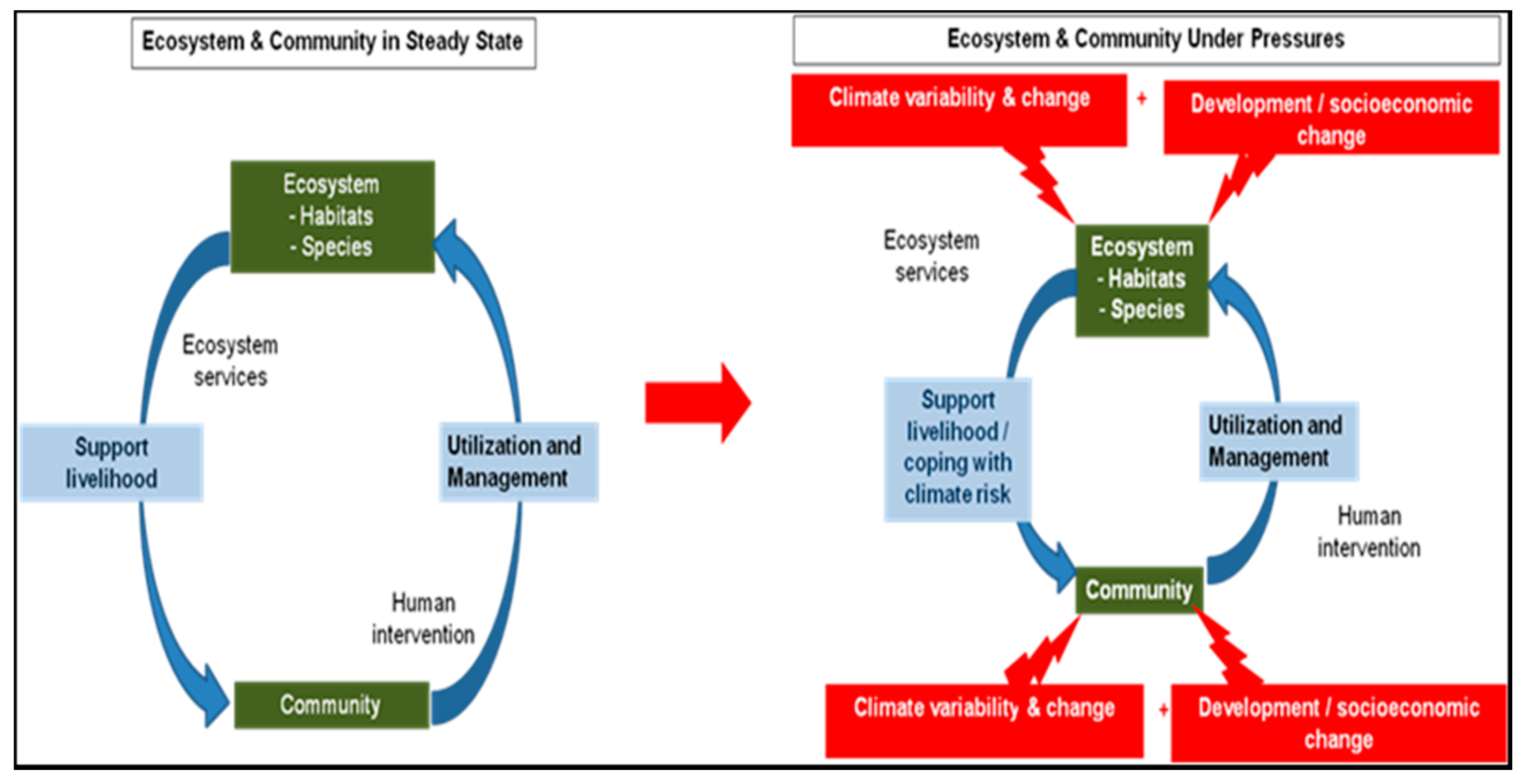
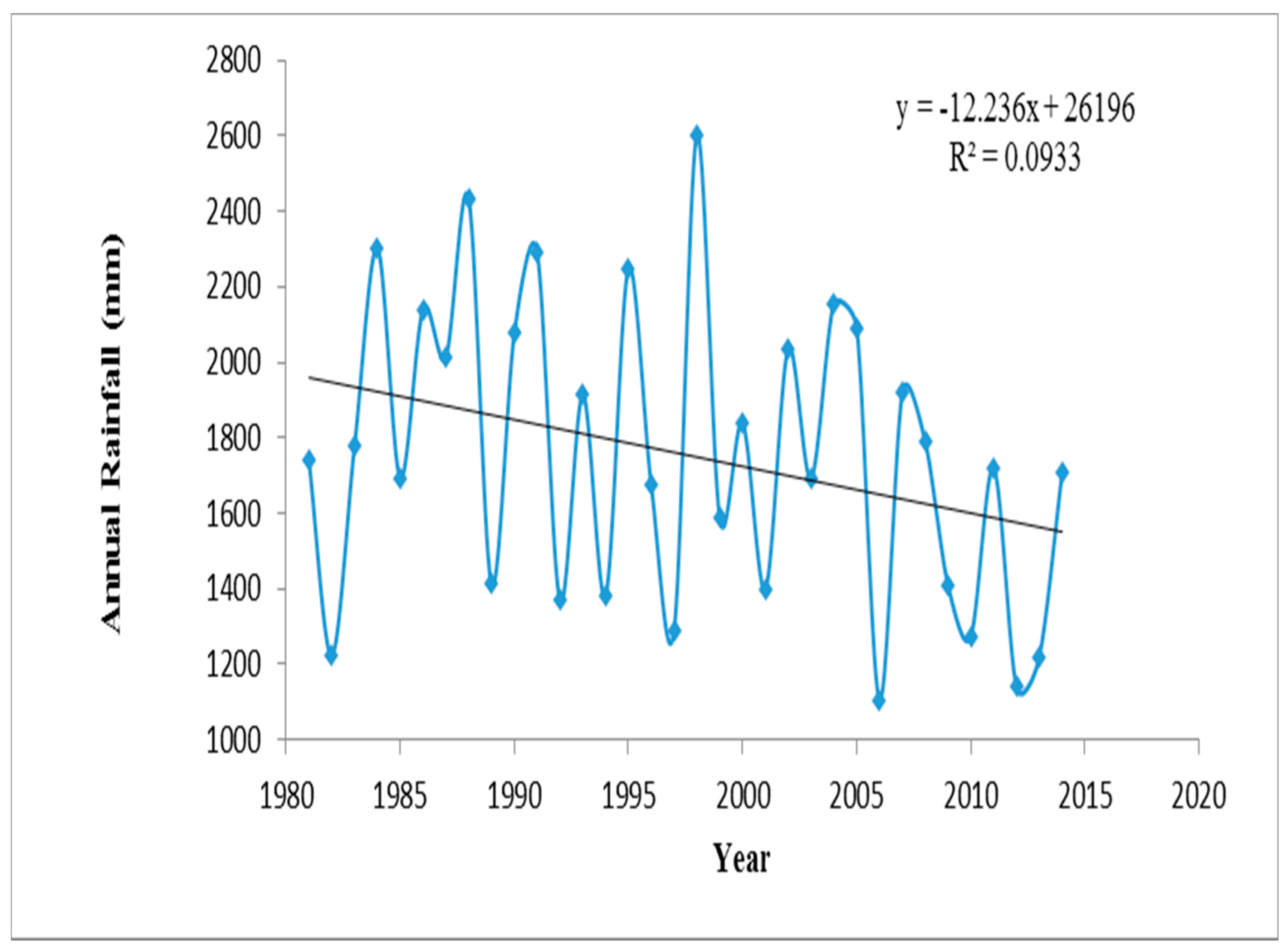
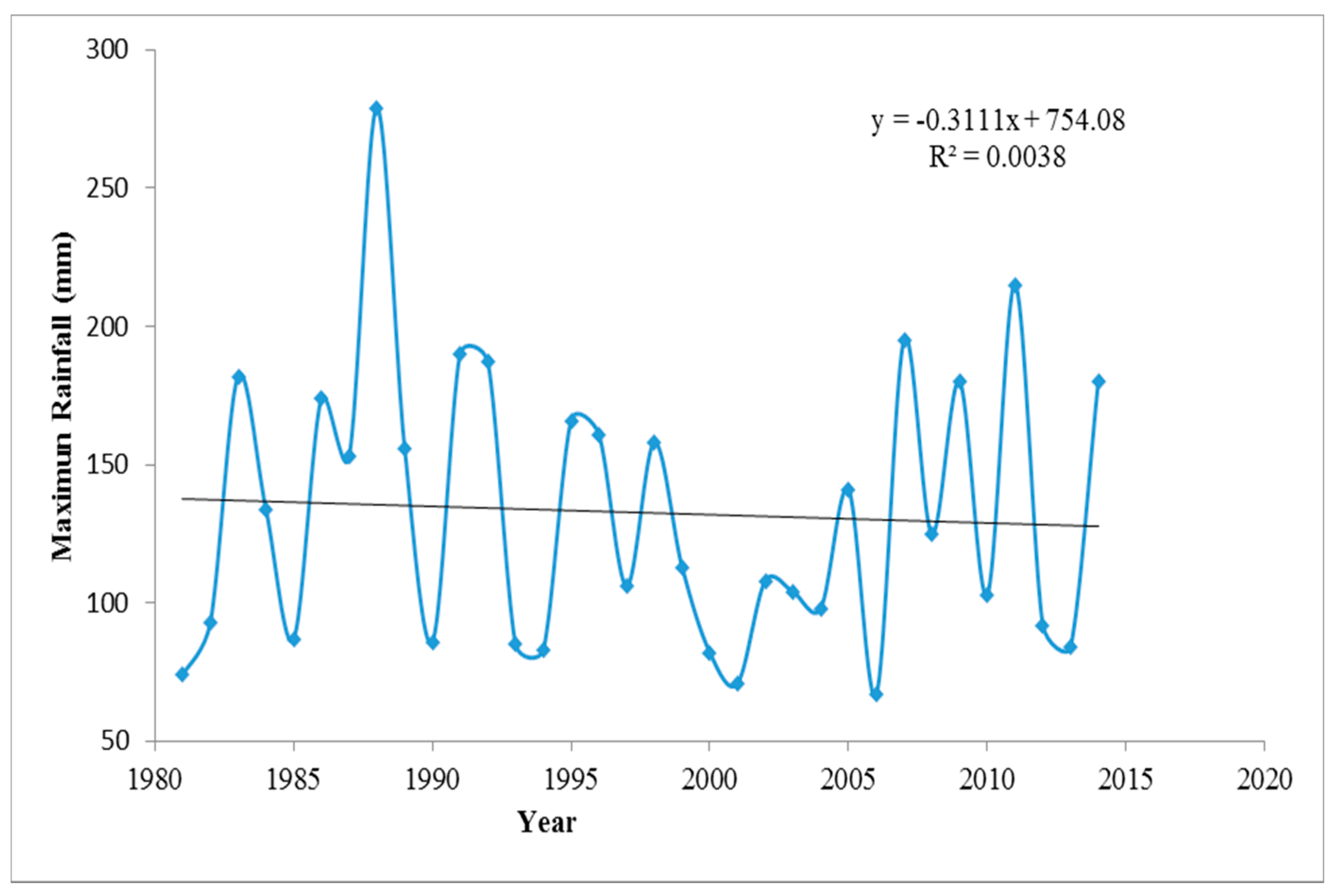
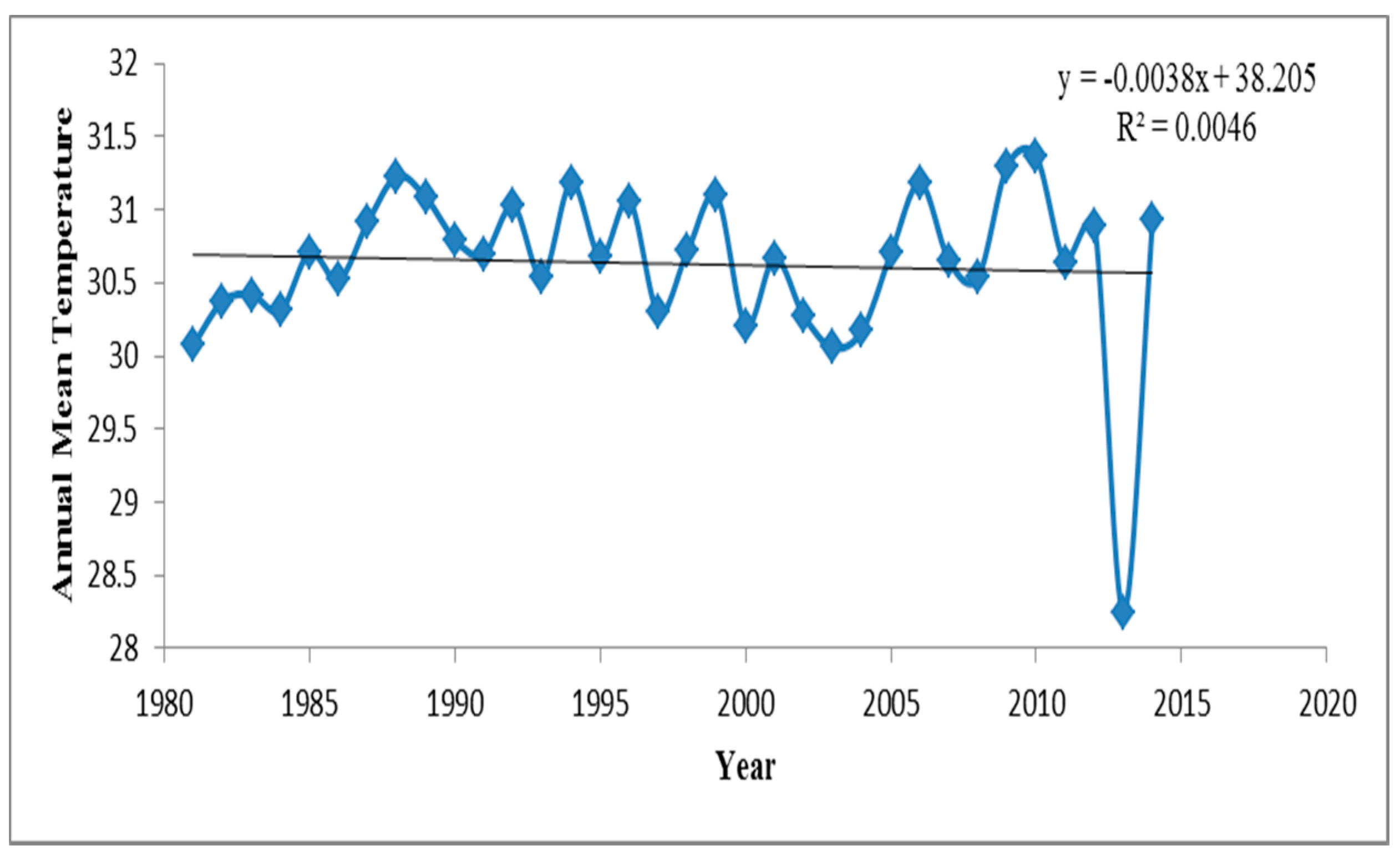
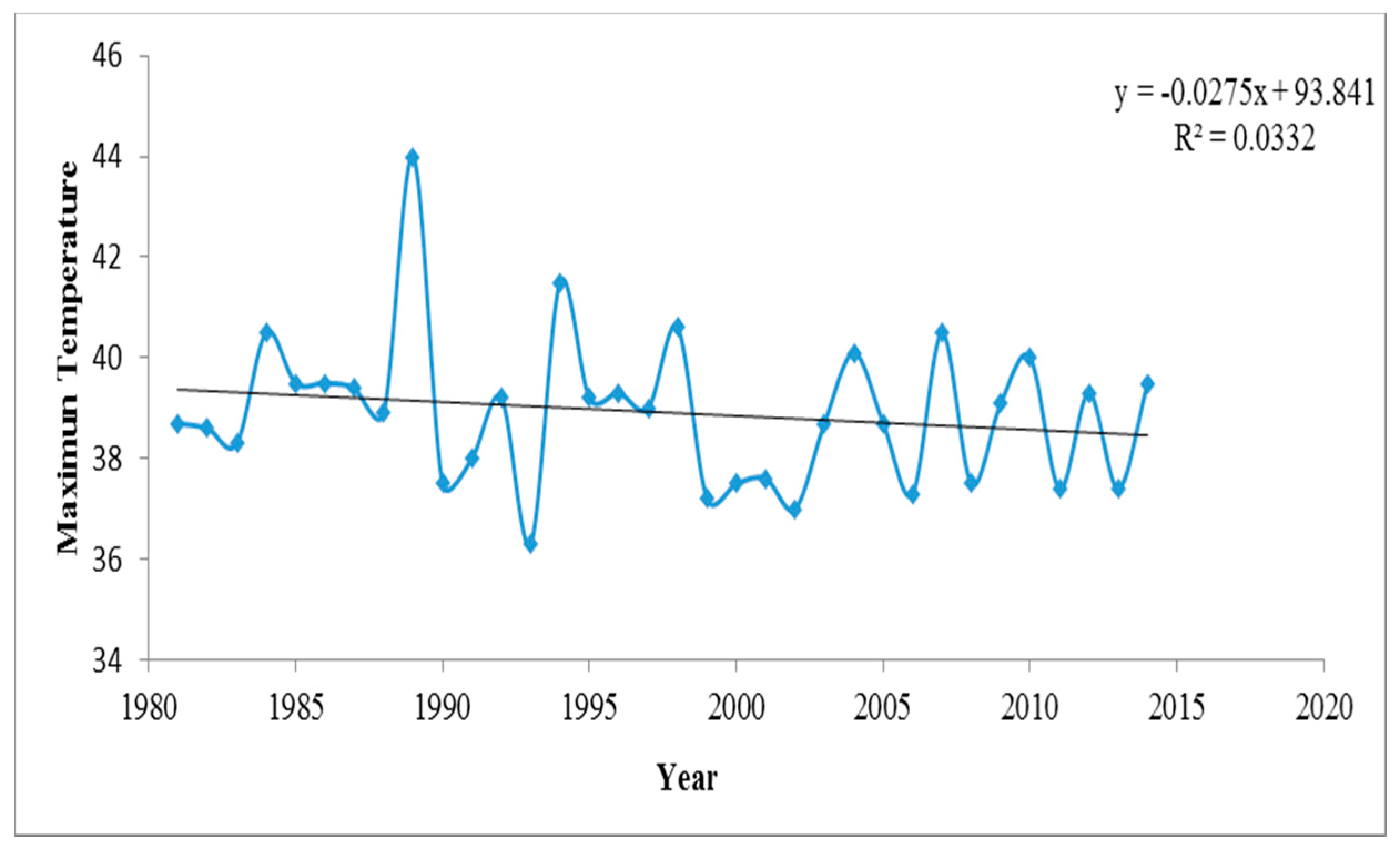
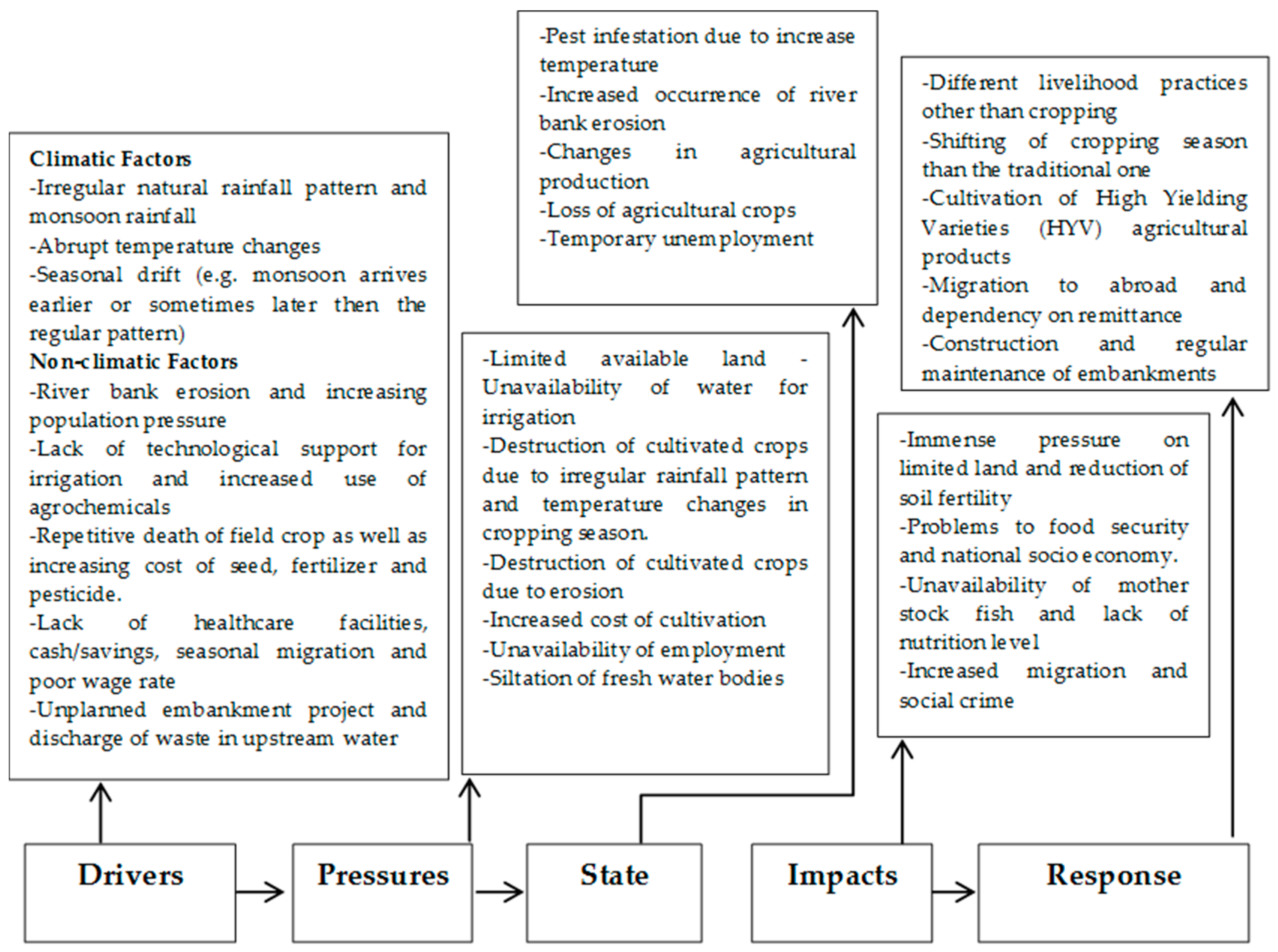
| Issues | Area in Hectares | Percentage (%) |
|---|---|---|
| Land Features | ||
| Settlement | 2720 | 7.39 |
| Agricultural Land | 22,708 | 61.69 |
| River | 7941 | 21.57 |
| Eroded Area | 3443 | 9.35 |
| Vulnerable Areas | ||
| High Vulnerable Area | 4701 | 12.77 |
| Medium Vulnerable Area | 10,656 | 28.95 |
| Low Vulnerable Area | 13,493 | 36.65 |
| Vulnerable Community | Pressures | Drivers | |
|---|---|---|---|
| Non-Climatic | Climatic | ||
| Key Habitat-Agriculture Land | |||
| Crop Farmers |
|
| |
|
| ||
|
|
| |
|
|
| |
|
|
| |
|
| ||
| Agricultural Labourers |
|
|
|
| Wage Labourer |
|
|
|
| Key Habitat-Water Bodies(River) | |||
| All communities especially those who live along the river bank |
|
|
|
|
| ||
|
| ||
| Communities living in the area |
|
| |
|
| ||
| Community | Pressures | Vulnerability | Coping Capacity | |
|---|---|---|---|---|
| Indicators | Remarks | |||
| Agricultural Farmer | Limited availability of land | Increased sedimentation | Integrated Protected Area Co-management (IPAC) report (2009) has also identified sedimentation as threats for losing agricultural land. |
|
| Reduction of land fertility | Increased use of chemicals and fertiliser | Population expansion extends the food demand which invites the elevated use of fertiliser and chemicals to increase production, ultimately reducing the land fertility. | ||
| Crop Farmer | Increased rate of erosion | Erosion rate | Mollah et al., 2011 reported the erosion rate of 9.35%. | |
| Unavailability of water for irrigation | Irregular monsoon rain and rainfall pattern | In recent years their irregular pattern of monsoon rainfall has been noticed, which causes the death of standing field crop just before the cutting season. | ||
| Destruction of standing crop | Increased pest invasion | Increased temperature and the late arrival of monsoon rainfall have been observed. | ||
| Unfavourable climatic condition | Sudden fog in flowering season and abrupt changes in rainfall and temperature | Sudden continuous fog for several days in the flowering season is causing the infertility of Boro rice. Abrupt changes in the rainfall pattern and temperature over the Bogra station (1981–2015) have been given in Figure 4, Figure 5 and Figure 6. | ||
| Wage Labourer | Unavailability of employment | Lack of cultivable land and poor wage rate | Loss of cultivable land has decreased the employment opportunity of many wage labourers and aggravated the changing of livelihood pattern. | |
| Key Habitat and Services | Key Community | Key Climate Concerns | Non-Climate Concerns | Consequences |
|---|---|---|---|---|
| Agricultural ProductsLand | ||||
| Land for crop cultivation | Farmers |
|
|
|
| Water Bodies (River) | ||||
| Water feeder of the ecosystem | All communities |
|
|
|
| Natural source of fish | Fishermen community |
|
| |
|
|
| ||
© 2016 by the authors; licensee MDPI, Basel, Switzerland. This article is an open access article distributed under the terms and conditions of the Creative Commons Attribution (CC-BY) license (http://creativecommons.org/licenses/by/4.0/).
Share and Cite
Rahman, S.H.; Faisal, B.M.R.; Rahman, M.T.; Taher, T.B. Analysis of VIA and EbA in a River Bank Erosion Prone Area of Bangladesh Applying DPSIR Framework. Climate 2016, 4, 52. https://doi.org/10.3390/cli4040052
Rahman SH, Faisal BMR, Rahman MT, Taher TB. Analysis of VIA and EbA in a River Bank Erosion Prone Area of Bangladesh Applying DPSIR Framework. Climate. 2016; 4(4):52. https://doi.org/10.3390/cli4040052
Chicago/Turabian StyleRahman, Syed Hafizur, B. M. Refat Faisal, Md. Towfiqur Rahman, and Toiaba Binta Taher. 2016. "Analysis of VIA and EbA in a River Bank Erosion Prone Area of Bangladesh Applying DPSIR Framework" Climate 4, no. 4: 52. https://doi.org/10.3390/cli4040052





